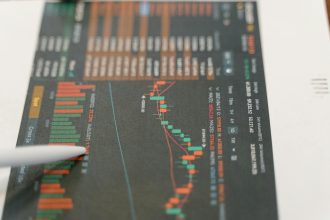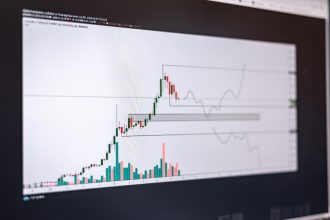Tesla’s Neural Networks: The Brains Behind Full Self-Driving
Imagine a car that can navigate complex city streets, anticipate pedestrian movements, and react faster than any human driver. This isn’t science fiction; it’s the promise of Tesla’s Full Self-Driving (FSD) software. At its core, this revolutionary technology relies on an intricate and powerful system of neural networks, meticulously trained on an unprecedented scale. These aren’t just algorithms; they are the digital brains learning from billions of miles of real-world driving data, constantly evolving to understand and master the art of autonomous navigation. The sheer volume of data is staggering, and it’s this relentless learning process that is paving the way for a future where driving is safer, more efficient, and accessible to all.
Unpacking the Power of Tesla’s Neural Networks
Tesla’s strategy hinges on its Full Self-Driving (FSD) software, which uses neural networks trained on billions of miles of real-world data. This constant stream of information allows the system to identify and interpret an astonishing array of objects and scenarios on the road. From distinguishing between a plastic bag blowing in the wind and a child chasing a ball, to understanding complex traffic light sequences and the subtle intentions of other drivers, these networks are performing feats of perception and decision-making that were once thought impossible for artificial intelligence.
How Neural Networks Mimic the Human Brain
At a fundamental level, neural networks are inspired by the structure and function of the human brain. They consist of interconnected nodes, or “neurons,” organized in layers. Information flows through these layers, with each neuron processing and transmitting signals. In Tesla’s FSD system, these networks are designed to process visual data from the car’s cameras, interpret it, and then make driving decisions. The “training” process involves feeding the network vast amounts of labeled data – images and videos of roads, vehicles, pedestrians, and more, along with the correct interpretations and actions. Through this process, the network learns to recognize patterns and make predictions.
The Scale of Data: A Game Changer
The key differentiator for Tesla’s FSD is the sheer volume of real-world data it collects. Every Tesla equipped with FSD capability acts as a data-gathering unit, contributing to a collective understanding of driving scenarios. This allows the neural networks to be exposed to an unparalleled diversity of situations, including rare and challenging ones that would be impossible to simulate or collect in a controlled environment. This continuous learning loop means the FSD system is always improving, becoming more robust and reliable with every mile driven by the global Tesla fleet.
Key Components of Tesla’s FSD Architecture
Tesla’s FSD system is not a single monolithic entity but rather a complex interplay of various neural networks, each specialized for different tasks. This modular approach allows for more efficient development and continuous improvement of individual components.
Perception: Seeing and Understanding the World
The perception system is arguably the most critical component. It takes raw data from the car’s cameras, radar, and ultrasonic sensors and transforms it into a coherent understanding of the surrounding environment. This involves:
- Object Detection and Recognition: Identifying and classifying everything from other vehicles, pedestrians, cyclists, and traffic signs to road markings and potential hazards.
- Lane Detection: Accurately identifying lane boundaries, even in poor weather conditions or when markings are faded.
- Depth Perception: Estimating the distance to objects, crucial for safe following distances and obstacle avoidance.
- Semantic Segmentation: Understanding the “what” of each pixel – is it road, sky, building, or vehicle?
Prediction: Anticipating Future Events
Once the environment is understood, the prediction system forecasts the future behavior of other road users. This involves:
- Trajectory Prediction: Estimating where other vehicles and pedestrians are likely to move in the next few seconds.
- Intent Recognition: Inferring the intentions of other drivers, such as whether a car is about to change lanes or a pedestrian is about to step into the road.
Planning and Control: Making Driving Decisions
Based on the perception and prediction outputs, the planning and control system determines the optimal path and actions for the vehicle. This includes:
- Path Planning: Calculating a safe and efficient route to the destination, considering traffic and road conditions.
- Speed Control: Adjusting the vehicle’s speed to maintain safe distances and comply with speed limits.
- Steering Control: Executing smooth and precise steering maneuvers.
The Role of Data in Continuous Improvement
The iterative nature of machine learning, particularly deep learning used in neural networks, means that more data leads to better performance. Tesla’s commitment to collecting real-world driving data is a strategic advantage. This data serves multiple purposes:
Training and Retraining Neural Networks
New data is constantly fed back to Tesla’s data centers, where it’s used to retrain and refine the existing neural networks. This process helps to improve accuracy, reduce false positives and negatives, and enhance the system’s ability to handle edge cases – those unusual or challenging situations that are difficult to anticipate.
Identifying and Addressing Edge Cases
Edge cases are the bane of autonomous driving. They are the unpredictable events that can trip up even the most sophisticated systems. By analyzing the vast dataset, Tesla can identify these edge cases, understand why the system struggled, and then develop solutions through targeted data collection and network retraining. For example, if the system consistently misinterprets a specific type of construction barrier, more data showing that barrier from various angles and contexts will be used to teach the network to recognize it correctly.
Validation and Verification
The collected data is also crucial for validating and verifying the performance of the FSD system. Before new software updates are rolled out to the public, they are rigorously tested on a large dataset of real-world scenarios to ensure safety and reliability. This meticulous approach is vital for building trust in autonomous technology.
Challenges and the Road Ahead
Despite the remarkable progress, achieving true Level 5 autonomy – where a car can drive itself anywhere under any conditions – remains a significant challenge. Tesla’s FSD is currently considered a Level 2 system, requiring driver supervision. Some of the hurdles include:
Adverse Weather Conditions
Heavy rain, snow, fog, and even direct sunlight can significantly degrade camera performance, making it harder for neural networks to perceive the environment accurately. Developing robust perception systems that can reliably function in all weather conditions is an ongoing area of research.
Unpredictable Human Behavior
While neural networks are getting better at predicting human actions, human behavior can be inherently unpredictable. Jaywalking, erratic driving, and unexpected maneuvers by other vehicles pose continuous challenges.
Regulatory and Ethical Considerations
As autonomous technology advances, so do the complexities surrounding regulations, liability in case of accidents, and ethical decision-making in unavoidable accident scenarios. These are societal issues that need to be addressed alongside technological development.
The Future of Transportation
The ongoing development of Tesla’s FSD, powered by its sophisticated neural networks and vast datasets, points towards a future where transportation is fundamentally transformed. Imagine reduced traffic congestion, fewer accidents caused by human error, and increased mobility for individuals who cannot drive. While the journey to full autonomy is complex, the foundational technology being built today is a testament to the power of artificial intelligence and the relentless pursuit of innovation.
The advancements in neural networks by companies like Tesla are not just about making cars drive themselves; they are about reimagining our relationship with mobility and unlocking new possibilities for safety, efficiency, and freedom on our roads.
Want to delve deeper into the future of AI and its impact on industries? Explore how artificial intelligence is revolutionizing various sectors.
For a comprehensive understanding of how AI is transforming transportation, check out this in-depth analysis on the future of autonomous vehicles.







